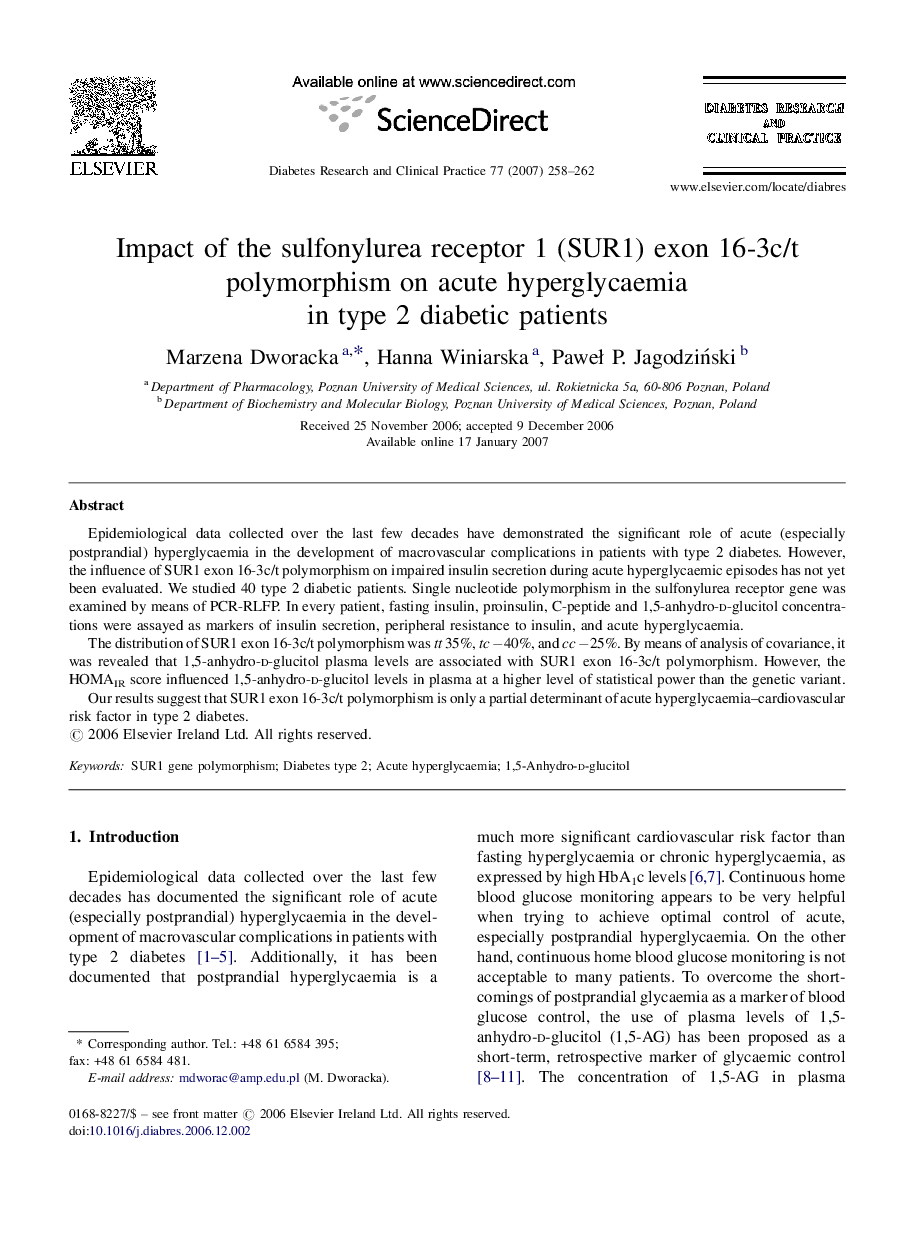| کد مقاله | کد نشریه | سال انتشار | مقاله انگلیسی | نسخه تمام متن |
|---|---|---|---|---|
| 2798688 | 1155694 | 2007 | 5 صفحه PDF | دانلود رایگان |

Epidemiological data collected over the last few decades have demonstrated the significant role of acute (especially postprandial) hyperglycaemia in the development of macrovascular complications in patients with type 2 diabetes. However, the influence of SUR1 exon 16-3c/t polymorphism on impaired insulin secretion during acute hyperglycaemic episodes has not yet been evaluated. We studied 40 type 2 diabetic patients. Single nucleotide polymorphism in the sulfonylurea receptor gene was examined by means of PCR-RLFP. In every patient, fasting insulin, proinsulin, C-peptide and 1,5-anhydro-d-glucitol concentrations were assayed as markers of insulin secretion, peripheral resistance to insulin, and acute hyperglycaemia.The distribution of SUR1 exon 16-3c/t polymorphism was tt 35%, tc −40%, and cc −25%. By means of analysis of covariance, it was revealed that 1,5-anhydro-d-glucitol plasma levels are associated with SUR1 exon 16-3c/t polymorphism. However, the HOMAIR score influenced 1,5-anhydro-d-glucitol levels in plasma at a higher level of statistical power than the genetic variant.Our results suggest that SUR1 exon 16-3c/t polymorphism is only a partial determinant of acute hyperglycaemia–cardiovascular risk factor in type 2 diabetes.
Journal: Diabetes Research and Clinical Practice - Volume 77, Issue 2, August 2007, Pages 258–262